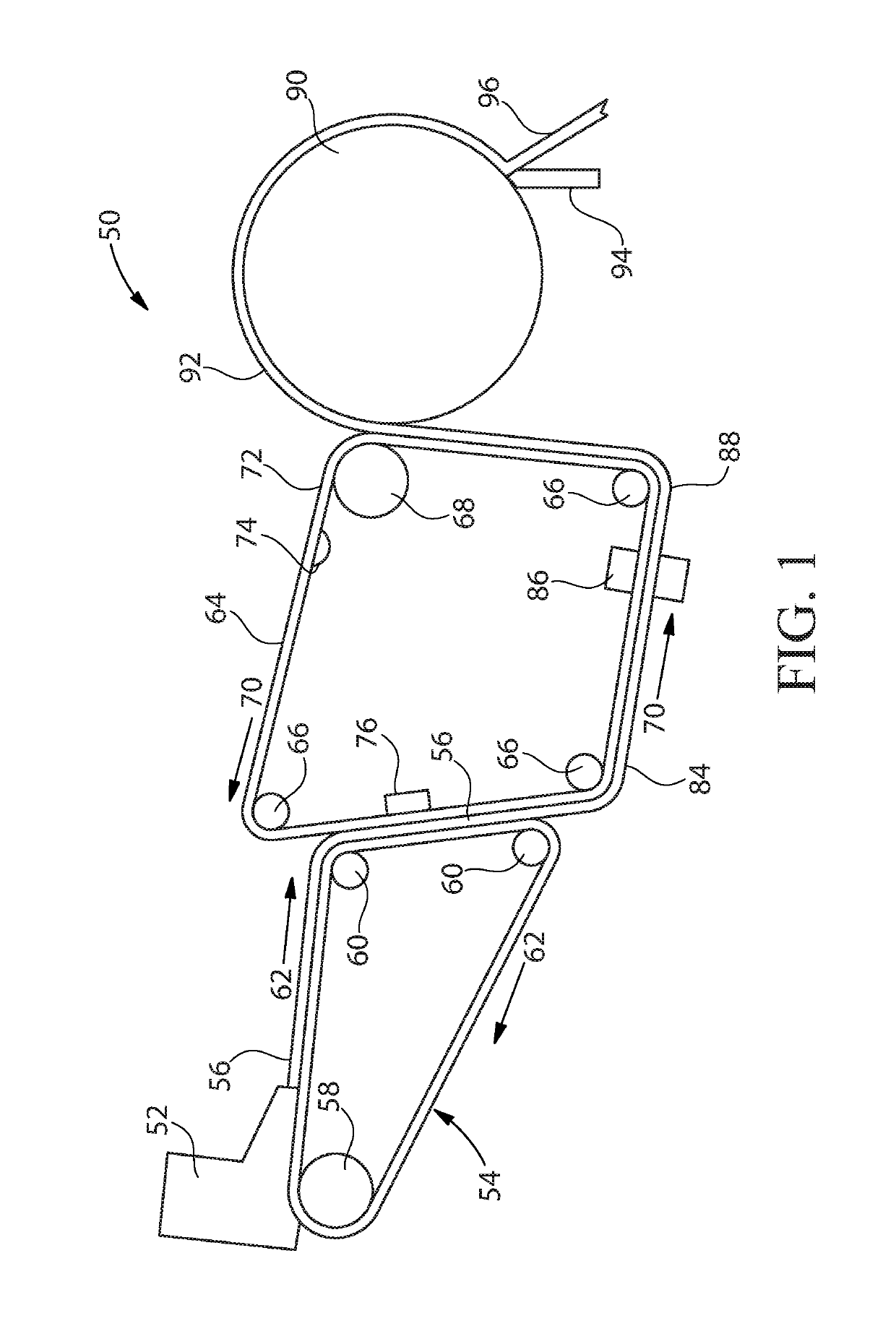Process for manufacturing an improved web material by the in-situ measurement and adjustment of ion concentration
a technology of in-situ measurement and adjustment of ion concentration, which is applied in the directions of pulp material addition, inorganic compound addition, creping adhesive addition, etc., can solve the problems of affecting the ability of a partially dry fibrous structure to dry, heavy film, and holes in the sh
- Summary
- Abstract
- Description
- Claims
- Application Information
AI Technical Summary
Benefits of technology
Problems solved by technology
Method used
Image
Examples
Embodiment Construction
[0033]The present disclosure is applicable to creped tissue and towel paper in general and includes but is not limited to conventionally wet pressed creped tissue and towel paper, high bulk pattern densified creped tissue paper and towel and high bulk, uncompacted creped tissue and towel paper.
[0034]The present disclosure provides a method to predict when a particular pulp and / or pulp manufacturing process can negatively impact the Yankee dryer adhesive of a tissue and towel manufacturing system. This disclosure also provides a method to proactively manage the Yankee dryer adhesive coating and the impact of inorganic ions present in the web material adhered thereto by proactively managing, adding, and / or controlling the cationic salts present in the fibrous pulp at the pulp manufacturing location, at the wet end of the papermaking operation, or anywhere in the tissue and / or towel manufacturing process (up to and including the Yankee creping adhesive spray booms) to facilitate ion ex...
PUM
| Property | Measurement | Unit |
|---|---|---|
| Concentration | aaaaa | aaaaa |
| Structure | aaaaa | aaaaa |
| Molar ratio | aaaaa | aaaaa |
Abstract
Description
Claims
Application Information
 Login to View More
Login to View More - R&D
- Intellectual Property
- Life Sciences
- Materials
- Tech Scout
- Unparalleled Data Quality
- Higher Quality Content
- 60% Fewer Hallucinations
Browse by: Latest US Patents, China's latest patents, Technical Efficacy Thesaurus, Application Domain, Technology Topic, Popular Technical Reports.
© 2025 PatSnap. All rights reserved.Legal|Privacy policy|Modern Slavery Act Transparency Statement|Sitemap|About US| Contact US: help@patsnap.com


